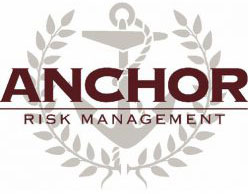Film & T.V. Health & Safety Training
1 Day Safe Working with Cameras & Lights
The Safe Working with Cameras & Lights course gives a broad overview and understanding of the key health and safety issues and responsibilities involving cameras, lights and sound during the making, shooting and recording of productions, whether on location, in studios, theatres, or on film stages
This course is aimed at Directors of Photography, Lighting Directors, Camera Operators, Grips, Gaffers, Best Boys, Production Electricians, Sound Supervisors and Recordists etc. Essentially, anyone who may at some point be involved in the setting up of the power supply, the design and build of the lighting rig, the direction and undertaking of the camera work and sound recording on a production. The course aims to provide:
- an overview of the health and safety legal responsibilities for employers, employees, contractors and freelancers
- identify the health and safety issues to be considered when working at a variety of venues and locations
- To determine the acceptable standards to which the whole production team should work
- To determine the standards of work equipment, ensure it is fit for purpose, operated safely and maintained
- How to assess the safety competence of, and work safely with, other contractors
- To provide participants with an understanding of the process of risk assessment and the need to exchange information
- To provide participants with the skills & knowledge required to carry out suitable & sufficient risk assessments
This course includes the following elements:
- The Law – brief outline to introduce concepts of risk assessment, duty of care and negligence
- Risk assessments – general, generic, method statements and those made under specific regulations, including their purpose, legal implications and importance
- Safe working with camera mounts, tracks, dollies, cranes, jib arms, ladderpods, pedestals and steadicam (ASPEC Guidance and HSE Cameras on Locations)
- Working by, and on, water
- Aircraft and vehicle tracking shots, CAA Regulations and Road Traffic Acts
- Working at Heights – basic requirements for safe working on scaffolding, zip-ups, tallescopes, ladders, hydraulic hoist/cherry pickers, roofs, tall buildings
- Working in extreme climates and weather conditions
- Working on other people’s premises and unusual locations, derelict buildings and the exchange of risks/information and the use of checklists
- Records and record keeping, inspection and certification
- Safe working with contractors and sub-contractors and the adequate exchange of information
Each delegate will receive course materials detailing the key points covered by the course and a certificate of completion, which will be posted within 14 days of the course date.
Maximum Number of Delegates: 16
